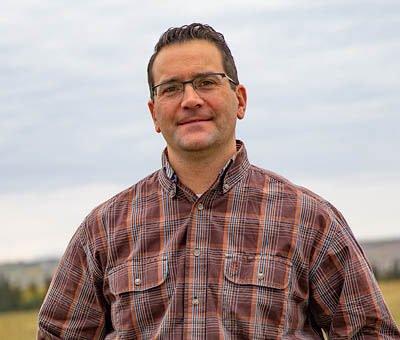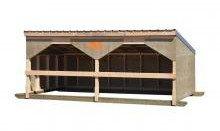The Importance of Shelter Management this Calving Season
By Shane Menzak
Investing in a good shelter management plan for your cows and calves this calving season is time and money well spent. In fact, research here in Canada has shown that a windbreak can provide enough protection from wind chill to reduce weight losses by 50 percent, as well as help minimize death loss in young or more vulnerable animals.
So, as you prepare for calving season, take a good look at your calving fields and assess whether you have provided enough shelters and windbreaks. Providing shelter from snow and wind will help cows maintain their body condition by helping them avoid cold stress. This is especially important during calving season, when you really don't want them to use their body fat to generate heat. You want your cows to be in optimal condition, leaving those reserves to best support fetal growth, calving and then throughout lactation.
MOBILE SHELTERS AND POSITIONING
One of the best options for shelters are ones that are mobile and easy to move – including wind fences on skids. These mobile shelters give you the ability to move to different locations on clean dry ground, allowing you to avoid snow accumulation and minimizing your risk for the spread of infectious disease.
How shelters are positioned is also important. I remind producers not to overlook the importance of a few hours of direct sunlight. A south-facing and well bedded shelter is ideal for capturing the morning sunshine and helping calves to dry off or warm up. In adverse weather, a wet calf will chill much more quickly than a dry calf and is much more vulnerable to cold temperatures and wind. Therefore, calves that have access to a shelter that allows them to dry off out of the elements are more comfortable – and stay healthier as a result.
Space is important too when planning your shelters. Be sure to have adequate space for the number of calves. Avoid overcrowding to reduce the risk of disease spread and trampling. Overcrowded shelters can also be difficult to notice or identify weak or sick calves.
In addition to providing good shelter, sufficient amounts of bedding should be provided in areas where cattle sleep or bed down to calve to protect them from the frozen ground and reduce heat loss. Staying dry in the winter is vital to your cattle staying warm. Sufficient bedding helps reduce hair matting from mud and manure, which decreases the insulating abilities provided by their hair coat.
With a properly thought out shelter management plan in place, you will be well on your way to setting the foundation for a successful calving season ahead.
Shane Menzak, Customer Account Manager, UFA Raised on a mixed farming operation one hour east of Edmonton, Alberta, Shane's passion for the cow/calf sector is home-grown. Upon completion of his Bachelor of Animal Sciences degree at the University of Alberta, Shane spent several years in the veterinary pharmaceutical industry. Shane brings a wealth of knowledge and a deep understanding of the beef industry to his role as Customer Account Manager, UFA, along with insights that lead to best and better practices for cow calf producers.

